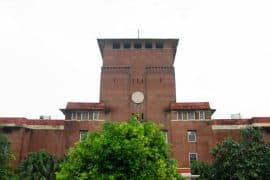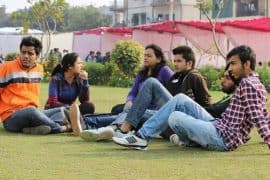We take a look at Bob Dylan’s impact on anti-fascist movements in the world and at home and his impact on counterculture
Robert Allen Zimmerman, aka Bob Dylan has been a figure in counterculture for more than 50 years. With a career in music starting from 1961 and continuing to this day, his songs challenged the establishment and its oppression still remain relevant now. One could call him a nobel laureate, a folk music icon, or a symbol of protest against oppression worldwide, but for the man himself, he doesn’t fit into any of these definitions.
As he once said “ I define nothing. Not beauty, not patriotism. I take each thing as it is, without prior rules about what it should be.”
It wouldn’t be fair to call Bob Dylan a musician who just writes protest songs or just writes love songs, his music spanning 50 years contains everything from protest music, to songs about love, loss, belonging, hope, and so much more. The man was incredibly hard to report on with the way he reacted to journalists and paparazzi, but his ideologies can be somewhat gauged from his songs against racism, war, and exploitative governments. Like most folk musicians of his time, he took great inspiration from and admired Woody Guthrie, a folk singer who was a leading name in the mid 20th century for his songs against fascism and oppression.
Bob Dylan’s songs such as “blowing in the wind” and “the times they are a-changing” have been protest songs since their release in the 60s, sung by the american youth to protest against the Vietnam War. The matter and lyrics behind this song remain relevant to this day, even more so in India where a current fight against a fascist regime is engulfing the country. In some protests led by Dastak DU or other collectives, Bob Dylan’s music could be heard sung by the voices of our youth against the tyrannical oppressors.
Midhun, the convenor of Dastak DU speaks about why the collective’s first song was “the times they are a-changing” and the importance of reviving the progressive artists movement.
“Our writers and artists were heavily influenced by the people’s art movement and the marxist aesthetics, which ultimately gave us the Progressive Writers Movement, Parallel Cinema, Bombay Progressive Artists Group, IPTA etc etc. But that movement has died and it’s rotting smell is all over in the corners of art and literature in India. As Dastak believes, decline in the progressive thinking and it’s reflections through art and literature is the main reason behind the smoothly done Hindu fascist uprising in India. What Dastak, as a progressive student artist’s forum really wish with our efforts is to revive the died out Indian progressive artist’s movement, from Sajjad to Faiz, from Premchand to Safdar Hashmi. Undoubtedly Dylan was the best way to start it and that’s why we picked Dylan’s song as our first song to be sung in Arts Faculty.”
Midhun, the convenor of Dastak DU
His music, even in lockdown, still questions the privilege and ignorance in the larger Indian public and a government without sympathy to the working class. As the lyrics in “blowing in the wind” say
“Yes, ‘n’ how many ears must one man have
Before he can hear people cry?
Yes, ‘n’ how many deaths will it take ’till he knows
That too many people have died?”
Prabhanu Kumar Das
[email protected]




Comments are closed.